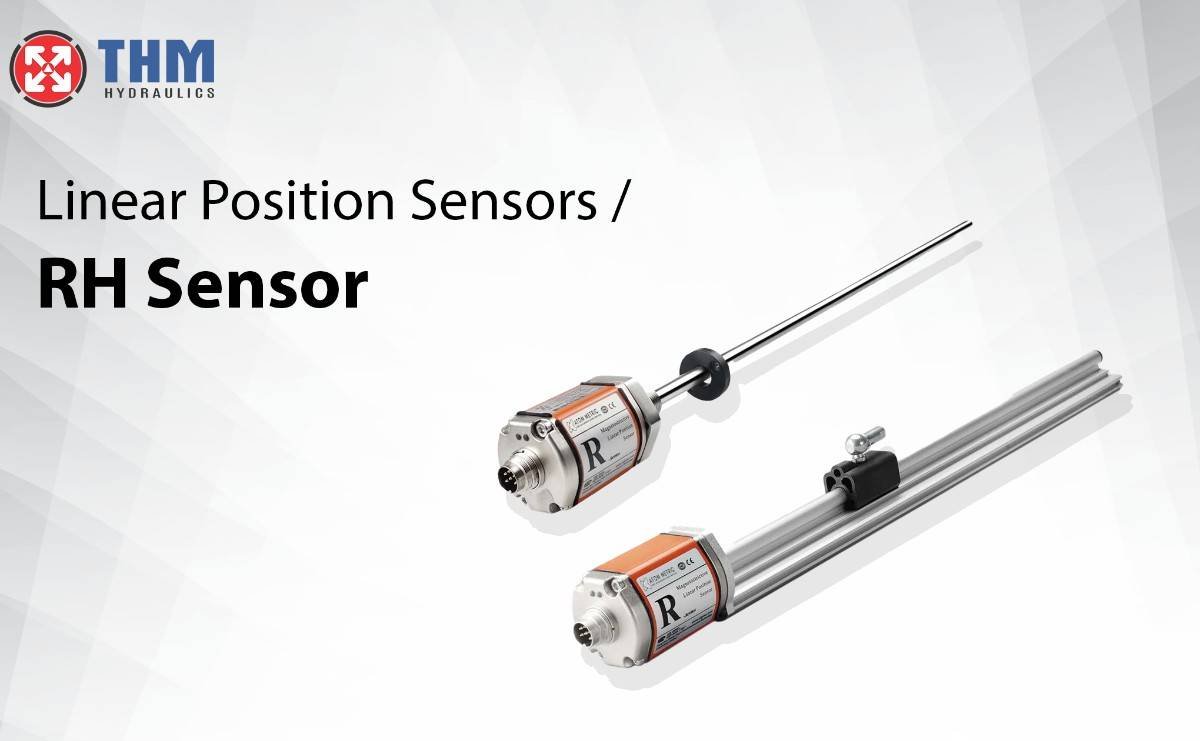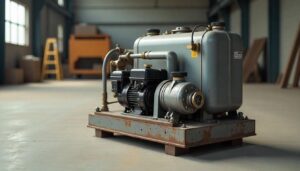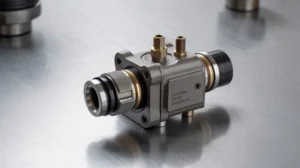Linear position sensors serve as essential tools in modern automation systems to measure the distance an object moves along a straight path. Manufacturers use these sensors across different industries to receive precise measurements about component positions. Linear position sensors play essential roles in every robotic automated vehicle and industrial plant that helping them work better and more safely
This article explains the different types of linear position sensors while explaining their operating methods and showing their uses in various industries. Our discussion focuses on why customers choose THM Huade Hydraulics as their trusted supplier of high-quality solutions in this field.
What Are Linear Position Sensors?
Linear position sensors use electric signals to track and measure straight-line object motion. These sensors link closed-loop managing systems to help automate machine operations with great accuracy.
Linear Position Sensor Types
Different linear position sensors.exist for market use with features designed to match particular application needs. These are the main types of linear position sensors found today:
1. Potentiometric
They represent basic and affordable linear position sensors. These sensors use a track with electrical resistance that connects to a moving contact point. When the object moves it creates a resistance change that produces an output signal in direct relation.
2. Inductive (LVDT)
The LVDT sensor system detects position changes by responding to electromagnetic induction. They contain one main coil plus two smaller coils. When a ferromagnetic core moves through the coils it changes voltage which gets converted into position data.
3. Magnetostrictive
These sensors work based on the physical reaction of magnetostriction. A position magnet generates a magnetic field that sends out sonic pulses through the waveguide. The sensor measures the amount of time it takes for the pulse to return and converts it into a position value.
4. Optical
The sensors detect position through light beams that travel to photo-detectors. The sensor system measures position by detecting how light changes when beams are interrupted or reflected under different light conditions.
5. Capacitive
Capacitive sensors find position shifts by tracking how conductive plates change their capacitance values. The moving object alters the space between plates which affects the capacitance and produces a signal output.
Linear Position Sensors Working Principle
The basic operation of a linear position sensor depends on its specific type but functions in this way:
1. The sensor system identifies when the target object moves or changes position along its straight path.
2. The sensor turns physical movement into an electrical signal through mechanical (potentiometric), magnetic (magnetostrictive), optical, inductive, or capacitive methods.
3. The sensor transmits position information to a controller that analyzes the data and starts the needed process.
All sensors operate differently but share the main goal of precisely measuring how far an object moves in real time.
Linear Position Sensors Applications
Linear position sensors help many industrial sectors and practical uses.
• Industrial Automation
Industrial plants and CNC equipment depend on these sensors to direct robotic arms while ensuring perfect movement accuracy in assembly lines.
• Mobile Equipment
In hydraulic cylinders and vehicle actuators for position monitoring. THM Huade Hydraulics combines these sensors into their high-tech hydraulic system designs.
• Medical Equipment
Medical devices need these sensors to keep their equipment at exact positions for accurate work.
• Aerospace and Defense
These sensors help to check how aircraft components and military equipment stay in their correct positions.
• Automotive Sector
Engine control units, brake systems and suspension systems use the sensors to check and control vehicle movement.
Why Choose THM Huade Hydraulics?
THM Huade Hydraulics stands as a respected provider of hydraulic and automation technologies that supplies top quality genuine linear position sensors built to withstand industrial applications. THM products deliver outstanding performance and satisfy customers throughout India because of their dedication to quality.
The sensors from THM help systems in mobile hydraulics manufacturing heavy duty equipment join together easily while providing precise results over an extended period.
Conclusion
The modern intelligent control system depends on sensors to automate operations while ensuring safety and improved efficiency in many industries. Different sensors and their working principles help industries pick the best solution for their operations.
Your production systems will operate with exact precision when you choose top quality sensors from THM Huade Hydraulics for your manufacturing automotive or heavy machinery needs.
When you use sensors correctly and maintain them properly, your industry will reach better automation and higher production levels.



